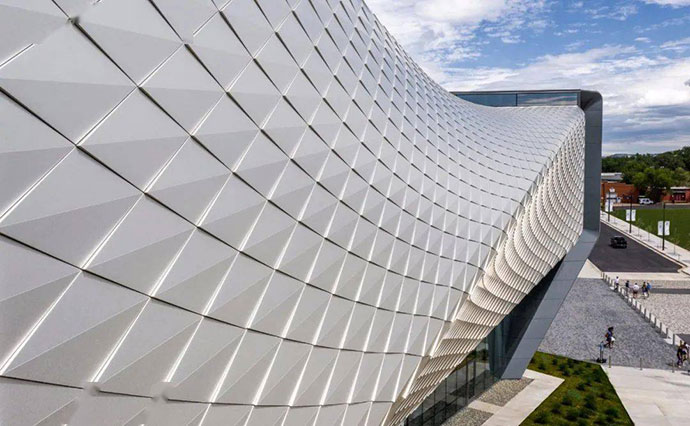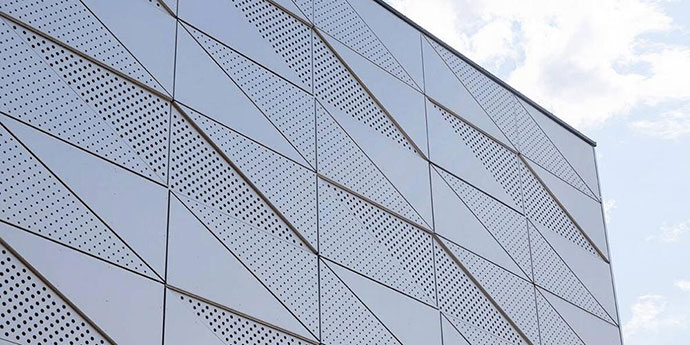Stainless steel cladding
For wall cladding, certain various types of metal can be used. Cladding, and stainless steel cladding, in particular, is a highly qualitative and sustainable solution to maintain the facade of a building throughout the years. The most commonly used materials for cladding are stainless steel, zinc, copper and aluminium. Each of these metals has its own features and advantages.
Why stainless steel cladding?
Compared to zinc, stainless steel is a material with a glossy, more polished finish. Due to this aesthetically beneficial quality, it is commonly used for wall cladding in a decorative manner. Stainless steel has a unique aesthetic advantage to any construction or building. Stainless steel is a very useful material for easy installation in any architectural facade project.

Stainless steel has a high durability: the metal panels will not change in appearance for several decades. This is in contrast with copper, which color will change over time. Stainless steel has an incredibly high resistance for corrosion, due to its ‘self-healing’ quality. When the metal is scratched or is starting to wear due to abrasion, an invisible layer of chromo(III) oxide (Cr2O3 on the periodic table) will form when oxygen is available. This thin layer protects the metal underneath it, and will make the material polished, smooth and lustrous again.
Besides the fact that stainless steel cladding almost lasts a lifetime, the metal is very friendly for our environment. Stainless steel is completely recyclable. The larger part of the stainless steel production nowadays is even being fabricated with recycled parts of the material. This shows that the metal can very easily be re-used, and makes it even more durable besides its long life span.